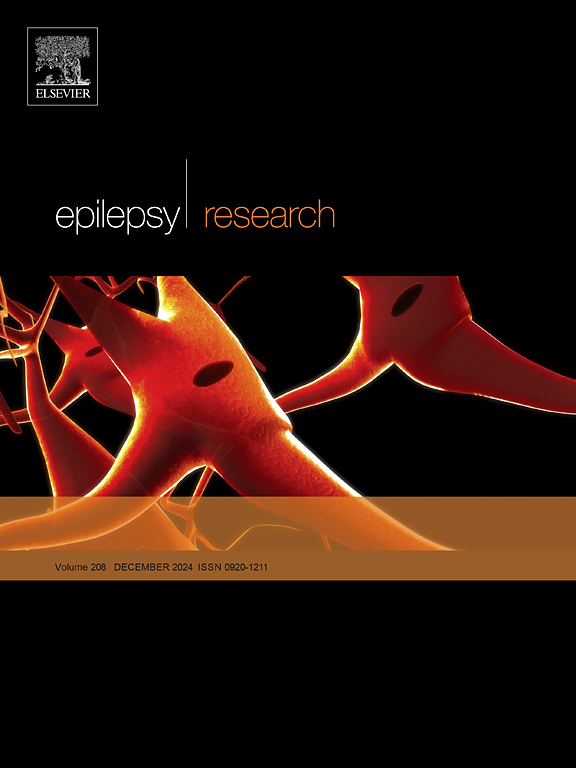Machine learning models for predicting therapeutic response in drug-resistant epilepsy: A bivariate diagnostic meta-analysis
IF 2
4区 医学
Q3 CLINICAL NEUROLOGY
引用次数: 0
Abstract
Background
Epilepsy affects approximately 6.4 per 1000 individuals worldwide. Despite advances in antiseizure medications (ASMs), nearly one-third of patients remain refractory to treatment, meeting criteria for drug-resistant epilepsy (DRE). This meta-analysis evaluated the performance of machine learning (ML) models in predicting therapeutic response in DRE based on ILAE-defined outcomes.
Methods
A systematic review and meta-analysis were conducted in accordance with PRISMA-DTA guidelines. Studies applying ML algorithms to predict treatment response in DRE were included. Eligible designs comprised retrospective or prospective observational studies. Outcomes included seizure remission (ILAE Class 1), ≥ 50 % reduction in seizure frequency, treatment failure, and diagnostic accuracy metrics. A bivariate random-effects model was used to pool sensitivity, specificity, and diagnostic odds ratio (DOR). Heterogeneity was assessed (I², χ²), and subgroup and meta-regression analyses were performed. Likelihood ratios, area under the curve (AUC), and Bayesian post-test probabilities were estimated. Publication bias was evaluated with Deeks’ test.
Results
Eight studies (n = 1887) met inclusion criteria (Kappa=0.98). Pooled sensitivity and specificity were both 0.84 (95 % CI: 0.76–0.89 and 0.77–0.89, respectively), with an AUC of 0.91. DOR was 27; LR+ , 5.2; LR−, 0.19. Heterogeneity was high (χ²=22.7; p < 0.001). Sensitivity was lower in prospective studies, prognostic models, and ASMs users, and higher with long-term follow-up. Meta-regression identified model type, study design, ASM exposure, and sample adequacy as key moderators.
Conclusion
ML models demonstrate high diagnostic accuracy in predicting therapeutic response in DRE. Findings support their potential clinical utility, provided external validation and methodological standardisation.
Registration PROSPERO protocol number
CRD 42024628323
预测耐药癫痫治疗反应的机器学习模型:双变量诊断荟萃分析
全世界每1000人中约有6.4人患有癫痫。尽管抗癫痫药物(asm)取得了进展,但近三分之一的患者仍然难以治疗,符合耐药癫痫(DRE)的标准。本荟萃分析评估了机器学习(ML)模型在基于ilae定义的结果预测DRE治疗反应方面的表现。方法按照PRISMA-DTA指南进行系统评价和meta分析。包括应用ML算法预测DRE治疗反应的研究。符合条件的设计包括回顾性或前瞻性观察性研究。结果包括癫痫发作缓解(ILAE 1级),癫痫发作频率降低≥ 50% %,治疗失败和诊断准确性指标。双变量随机效应模型用于合并敏感性、特异性和诊断优势比(DOR)。评估异质性(I²,χ²),并进行亚组和meta回归分析。估计似然比、曲线下面积(AUC)和贝叶斯检验后概率。采用Deeks检验评价发表偏倚。结果8项研究(n = 1887)符合纳入标准(Kappa=0.98)。合并敏感性和特异性均为0.84(95 % CI分别为0.76-0.89和0.77-0.89),AUC为0.91。DOR为27;LR + ,5.2;LR−0.19。异质性高(χ²=22.7;p & lt; 0.001)。前瞻性研究、预后模型和asm使用者的敏感性较低,而长期随访的敏感性较高。元回归确定模型类型、研究设计、ASM暴露和样本充分性为关键调节因素。结论ml模型对预测DRE的治疗反应具有较高的诊断准确性。研究结果支持其潜在的临床应用,提供了外部验证和方法标准化。普洛斯佩罗协议号crd 42024628323
本文章由计算机程序翻译,如有差异,请以英文原文为准。
求助全文
约1分钟内获得全文
求助全文
来源期刊

Epilepsy Research
医学-临床神经学
CiteScore
0.10
自引率
4.50%
发文量
143
审稿时长
62 days
期刊介绍:
Epilepsy Research provides for publication of high quality articles in both basic and clinical epilepsy research, with a special emphasis on translational research that ultimately relates to epilepsy as a human condition. The journal is intended to provide a forum for reporting the best and most rigorous epilepsy research from all disciplines ranging from biophysics and molecular biology to epidemiological and psychosocial research. As such the journal will publish original papers relevant to epilepsy from any scientific discipline and also studies of a multidisciplinary nature. Clinical and experimental research papers adopting fresh conceptual approaches to the study of epilepsy and its treatment are encouraged. The overriding criteria for publication are novelty, significant clinical or experimental relevance, and interest to a multidisciplinary audience in the broad arena of epilepsy. Review articles focused on any topic of epilepsy research will also be considered, but only if they present an exceptionally clear synthesis of current knowledge and future directions of a research area, based on a critical assessment of the available data or on hypotheses that are likely to stimulate more critical thinking and further advances in an area of epilepsy research.
 求助内容:
求助内容: 应助结果提醒方式:
应助结果提醒方式:


